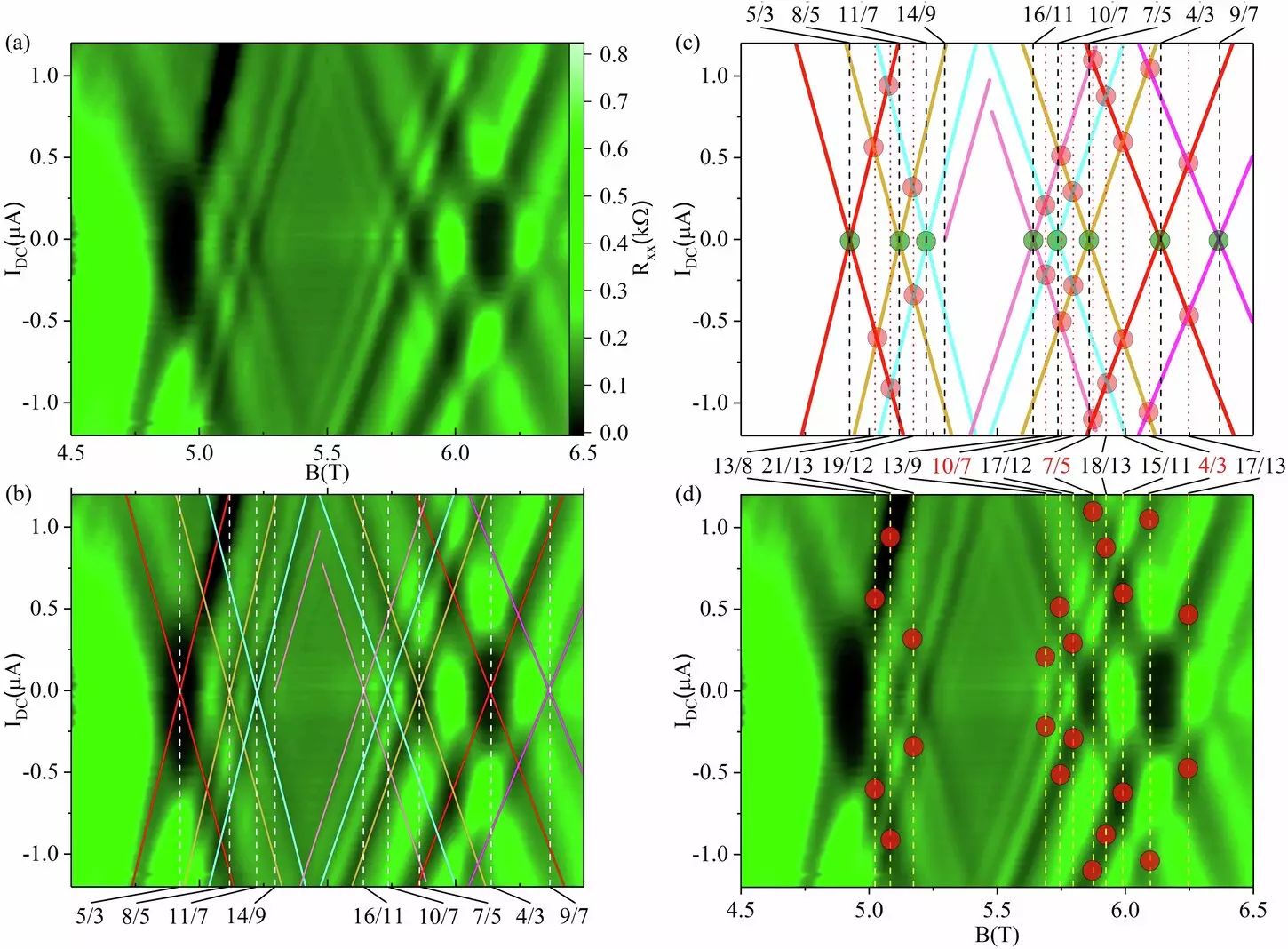Imagine a world where the rules of physics are turned upside down, where electrons defy expectations and reveal new secrets. This is the world that a team of researchers, led by Georgia State University Professor of Physics Ramesh G. Mani and recent Ph.D. graduate U. Kushan Wijewardena, has been exploring in Georgia State’s laboratories. Their groundbreaking studies have led to a recent discovery published in the journal Communications Physics, shedding light on the enigmatic world of fractional quantum Hall effects (FQHE) and uncovering unexpected phenomena.
The quantum Hall effect has been a pivotal area in condensed matter physics, dating back to the groundbreaking discovery by Klaus von Klitzing in 1980. This discovery led to a Nobel Prize in 1985 and set the stage for further research into the fractional quantum Hall effect, which later won a Nobel Prize in 1998. The discovery of graphene in 2010 opened up new possibilities for massless electrons in flatland, leading to yet another Nobel Prize. The field continued to evolve, with theories about new phases of matter recognized with a Nobel Prize in 2016. These discoveries paved the way for the development of modern electronics and set the stage for future technological advancements in energy efficiency and quantum computing.
In a series of experiments conducted in extremely cold conditions and under a magnetic field, Mani, Wijewardena, and their colleagues applied a supplementary current to high-mobility semiconductor devices. By observing the unexpected splitting of FQHE states and the crossings of split branches, they were able to explore new non-equilibrium states of these quantum systems. The study highlighted the crucial role of high-quality crystals in the success of the research, emphasizing the need for precise materials in the study of flatland physics.
Wijewardena, reflecting on the findings, expressed his excitement about the work and the years of research that led to this moment. The study not only challenges existing theories but also hints at a hybrid origin for the observed non-equilibrium excited-state FQHEs. These unexpected results open the door to new discoveries in the field of condensed matter physics, inspiring future research and technological advancements in quantum computing and materials science.
As Mani, Wijewardena, and their team continue to push the boundaries of flatland physics, they are paving the way for future technologies that could revolutionize data processing and energy efficiency. By exploring uncharted territories and training new generations of students, they are setting the stage for groundbreaking advancements in the high-tech economy. Each experiment brings them closer to understanding the complex behaviors at play in flatland physics, keeping them open to the possibility of new discoveries along the way.
The research conducted by Mani, Wijewardena, and their team represents a significant step forward in the field of flatland physics. By pushing the boundaries of what is known and exploring new methods of measurement, they are uncovering valuable insights that have the potential to shape future technologies. The implications of their findings extend beyond the lab, hinting at a future where quantum computing and materials science play a central role in advancing society as a whole. As they continue on their journey of discovery, the team remains committed to unlocking the mysteries of flatland physics and harnessing its potential for the benefit of all.


Leave a Reply